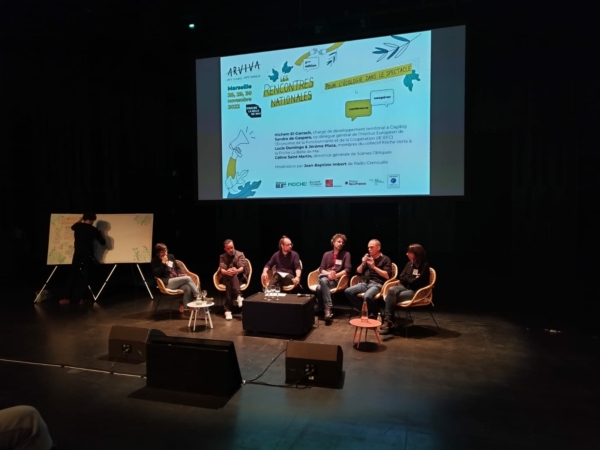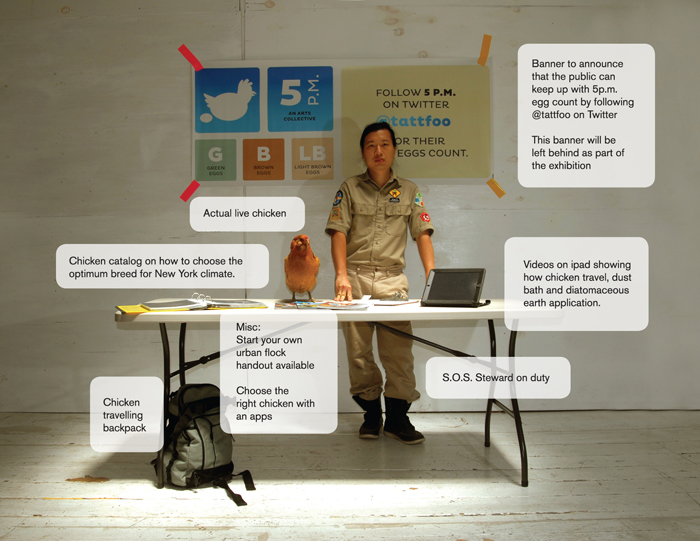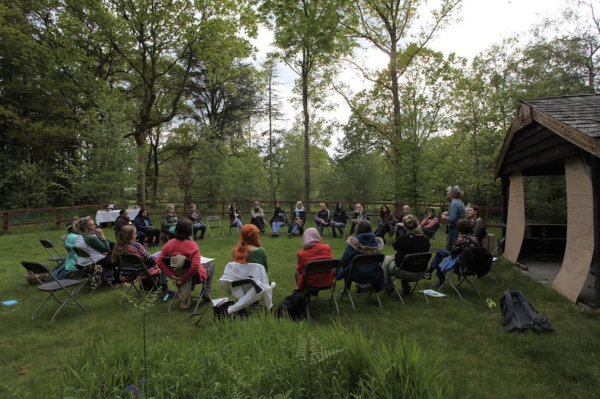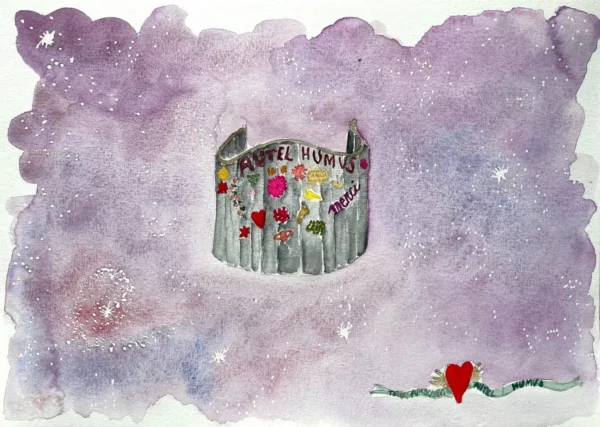
Rencontres ARVIVA #5
Metz accueille la 5e édition des Rencontres Annuelles pour l’Écologie dans le Spectacle Vivant (ARVIVA), à l’Hôtel de Région. Au…

Art, Environment, Action ! : an environmental « artshop » and teaching laboratory taking place at the Sheila C. Johnson Design Center – September 27 – December 15 2012.
The opening reception will take place on September 27. A member of the Staten Island collective, 5 P.M. (Poop Machine), will be assisting artist Tattfoo Tan in a workshop on raising urban chickens. This work should come naturally to the 5 p.m. member, because she is, in fact, a chicken.
This opening reception reflects the nature of the unusually interactive and interdisciplinary laboratory taking place this fall at the Sheila C. Johnson Design Center (SJDC) at Parsons The New School for Design, Art, Environment, Action! Over its nearly four-month run, this creative laboratory will bring together a diverse cross-section of artists, designers, architects, dancers, chefs, and scientists, working at the intersections of art, pedagogy, and ecology. Designed as a « toy box » of possibilities, the gallery will be continually transformed through dynamic programs that will rely on public participation. Visitors are invited to sign up for workshops, off-site explorations, walks, dialogues, and other interactive exchanges led by the artists, encouraging their active engagement as makers and thinkers. Artifacts of these exchanges will seed subsequent dialogue and interaction in the gallery.
« We see the galleries as spaces with which to think, rather than as venues for display, » says Radhika Subramaniam, Director and Chief Curator of the Sheila C. Johnson Design Center and the curator of the lab. « Art, Environment, Action! is about catalyzing a culture of conversation, creative experience, and action. It is co-created by participants and artists. » The show continues the SJDC’s ongoing commitment to environmental issues as seen in its past exhibitions on urban agriculture and food systems (Living Concrete/Carrot City, Fall 2010) and climate change (U-n-f-o-l-d, Fall 2011.).
Programs include:
• Chez Panisse chef Jerome Waag, of the art/food collective, OPENrestaurant, will trace the ecology of the Atlantic Ocean through a culinary exploration of cod that includes a food-gathering safari and a cooking class.
• Futurefarmers, the collective founded by Amy Franceschini, will lead an ethno-botanical examination of New York City, which includes, in collaboration with Studio-X, an architectural workshop.
• During her two-week residency, Beatriz da Costa and her collaborators will develop an Anti-Cancer-Survival Kit incorporating print, online, smartphone, and physical objects for people living with cancer, as well as their friends and family. She will also lead workshops in anti-cancer cooking and gardening.
• Dance and design finds expression in two site-specific projects: Jill Sigman/thinkdancewill construct and perform within a structure made out of discarded plastic bottles collected around the New School campus. Choreographer Jennifer Monson and architect Kate Cahillwill lead an exploration of the Jamaica Bay wildlife refuge through movement and other means.
• The collective Ecoarttech will lead urban expeditions of the new school environs with their mobile app Indeterminate Hikes+, while artist Stephanie Rothenberg will lead a mixed-reality walking tour in the Bronx, using mobile devices to create augmented realities.
• The alternative barter for knowledge school, Trade School will be in residence throughout the month of October offering a range of workshops and classes.
• Mapping and re-appropriating space spurs the work of Public Laboratory for Open Technology and Science who will teach diy aerial mapping techniques, while Red76 will re-imagine the right to the city through music, internet radio broadcasts, and other collaborative action.
• Illustrators and graphic designers are invited to join Michael Mandiberg to create images and illustrations for environmentally oriented Wikipedia pages or work with the Beehive Design Collective to explore the complex history of mountaintop removal coal and learn to creative graphic stories collaboratively.
• The Cotard Syndicate leads participants in a series of perceptual tests that examine our relationship to the natural, while Eco-artist Beverly Naidus leads new ecological approaches to a city block.
General information
Hours: daily 12–6pm, and Thu until 8pm
Closed all major holidays and holiday eves.
Admission: Free
For more information, please contact 212 229 8919 or visit www.newschool.edu/sjdc.
Metz accueille la 5e édition des Rencontres Annuelles pour l’Écologie dans le Spectacle Vivant (ARVIVA), à l’Hôtel de Région. Au…
Culture Declares Emergency organise un petit-déjeuner en ligne sur les collaborations entre artistes et organisations environnementales. L’événement explore comment ces…
Clôture poétique et conviviale de l’été 2025, Le Grand Partage vous invite à une journée exceptionnelle à Zone Sensible. Entre…

